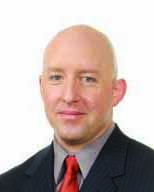Clinics stage comeback as services grow
IN THIS ARTICLE
- Health Care & Life Science Topic
- Erika Martin Author
By Erika Martin Friday, February 6th, 2015
These days, the waiting room at Santa Barbara Neighborhood Clinics’ Eastside location is likely to be bustling with activity, from the scampering of adventurous toddlers to family members quietly consoling one another. The staff banters with patients as they usher them in and out of treatment.
But two summers ago, the nonprofit health care network was on the brink of collapse and operating under a donation-dependent business model that couldn’t handle the burdens of increasing operating expenses and new compliance costs. The weakened organization had spent nearly a year without a leader when Trula Breuninger was appointed CEO in July 2013, when the system announced it would close if it failed to cover its $1.5 million shortfall.
The nonprofit system of clinics, established 40 years ago, provides health care to 17,000 of the South Coast’s lowest-income residents. Breuninger said that in the context of Santa Barbara’s health system, it is crucial the clinics be available to provide primary and preventative care to intervene before a patient ends up in the hospital emergency room, which places greater economic strain on the community.
“When you look at our population, they present with more acute issues, and you have to address those,” Breuninger said. “The population generally doesn’t have the resources to go from place to place to place, so we try to make sure that everything they need is accessible here and that we minimize the barriers they face on a daily basis in accessing health care.”
Breuninger was able to weather the storm and bring finances into the black largely thanks to the expansion of health coverage under the Affordable Care Act that has dropped the clinics’ number of uninsured patients by 14.4 percent, giving the organization a more reliable payment structure. Despite the number of patients it serves remaining stagnant, SBNC has been able to adhere to a stronger business model that streamlines operations and reduces costs.
Since 37 percent of the network’s users are still uninsured patients whose visits don’t generate revenue, the organization is also reigniting fundraising efforts and last month brought on Anne Kratz, formerly the vice president for university advancement and development at Fielding Graduate University, as its director of development.
To prepare for the influx of newly insured patients, the clinics doubled their staff of certified enrollment counselors from four to eight over the past year. And last spring, the organization received a large grant from the Health Resources and Services Administration, a federal agency, to open its new medical and dental clinics in Goleta’s Old Town neighborhood. The funds, part of Medicaid expansion under the ACA, include an immediate grant of $812,500 plus annual funding of $650,000.
“The federal resources have helped our bottom line also, and the increased population that we see there will also generate more revenue because we’ll see more visits,” Breuninger said.
This year, the Goleta facility will add staff and bring its number of medical treatment rooms from two to six in hopes of accommodating 3,750 patients by the end of 2015.
SBNC Comptroller Nancy Tillie said the organization saw revenue from MediCal increase by 11 percent in 2014 alongside a proportional 11 percent decrease in uninsured clients. Meanwhile, Tillie said, the clinics’ cost went down 10 percent between 2013 and 2014.
The network was also able to substantially increase its prospective payment system, or PPS, rate, which determines how much of its services are reimbursed through MediCal. A PPS rate jump across all SBNC facilties, from 20 percent in Isla Vista to 40 percent on the Eastside, will substantially impact the organization’s revenue stream. And the so-called wrap-around rate — approval of requests for reimbursement of the difference between a patient’s insurance payment and the Medicaid reimbursement rate — is up 169 to 198 percent at its clinics.
Breuninger said the new federal health law was also a catalyst for collaborative efforts such as SBNC’s partnerships with Cottage Health System and Sansum Clinic to expand its service network.
“I think it’s great to share resources and be able to look at the population — who’s not getting care, who needs better care,” Breuninger said. “They see the same patients that we do, and we want to make sure that they’re cared for at the primary care setting as opposed to later on when they have to care for them and the costs are much higher. We’re certainly a major fabric in this community as that safety net provider for that particular population.”
But in a Jan. 23 lecture for California Lutheran University’s Corporate Leadership Series, Cottage Health System CEO Ron Werft said so far, the Cottage hospitals have not seen a decrease in emergency room visits.
“The hope is that when people sign up for MediCal they are also assigned a primary care physician so that they will begin going to the county clinics or the Santa Barbara Neighborhood Clinics for their primary care and not go to the emergency department,” Werft said.
However, Werft added that the South Coast medical community’s collaborative efforts, which have led to “a lot more conversations about the whole patient,” defy the national norm.
“There was a call to arms from Santa Barbara Neighborhood Clinics, and Cottage and Sansum as well as other providers stepped up,” Werft said. “When you have a problem like that, we work hard to get together and solve it. And the fact of the matter is that’s pretty unusual. If I talk to my colleagues across the country, they don’t do that as we’ve done here.”
But, of course, the new insurance set-up hasn’t come without its share of hang-ups that can derail operations. According to Yessenia Marroquin, director of clinic operations, the greatest obstacles under ACA come from a dysfunctional statewide administration, which leaves staff on hold up to four hours when calling for a patient and whose Web platform often crashes during enrollment.
“That’s kind of the hard part of the whole set-up, because the state doesn’t have the manpower or resources to control the whole situation,” Marroquin said.
Related Articles
 Friday, November 17th, 2017
Friday, November 17th, 2017









